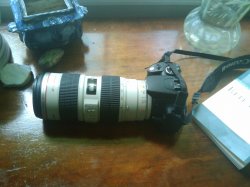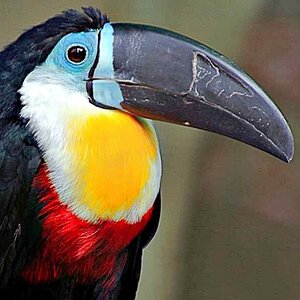PhilGarber
TPF Noob!
- Joined
- May 6, 2008
- Messages
- 813
- Reaction score
- 0
- Location
- New Jersey (We don't bite)
- Website
- philipofnj.redbubble.com
- Can others edit my Photos
- Photos NOT OK to edit
EDIT-Posted some photos taken with the lens. I know, the noise levels are terrifying.
Hi-
Behold, my lovely rental! This baby from Lensprotogo is a 70-200mm 2.8 IS 'L' Lens. After putting my camera around my neck, I can see where all the bad jokes come from .
.
Here are my few questions, please keep in mind this is my first IS or 'L' lens.
1: What's the difference from IS mode 1 and 2?
2: What's does it mean to focus at infinity? I've heard this term before. \
3: What does the switch that says 1.4m-Infinity and 2.5m-infinity mean?
4: Why does the focus ring work normally even with AF on?
Hi-
Behold, my lovely rental! This baby from Lensprotogo is a 70-200mm 2.8 IS 'L' Lens. After putting my camera around my neck, I can see where all the bad jokes come from
Here are my few questions, please keep in mind this is my first IS or 'L' lens.
1: What's the difference from IS mode 1 and 2?
2: What's does it mean to focus at infinity? I've heard this term before. \
3: What does the switch that says 1.4m-Infinity and 2.5m-infinity mean?
4: Why does the focus ring work normally even with AF on?
Attachments
Last edited:






![[No title]](/data/xfmg/thumbnail/37/37608-63b0d340b0972479217b548a4026df96.jpg?1619738149)









